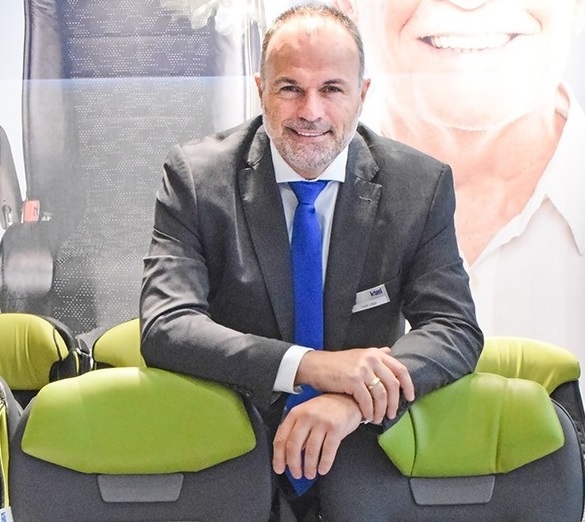Franz Kiel GmbH (Kiel), a leading manufacturer of seating systems for commercial vehicles and public transportation, including seating solutions for buses and trains at the local, regional and intercity levels, presented its tried and tested products together with updated models in the local (‘City’ product line), regional (‘Intercity’ product line) and intercity (‘Coach’ product line) travel segments at the IAA Commercial Vehicle Show held in Hannover in September.
Displaying seats at its open exhibition stand, Kiel focused on brand-specific design and improved ergonomics across all its models. The company fulfils its crucial desire for greater efficiency through the use of modern materials to reduce weight to the absolute minimum, with innovative features to live up the demands of digitalization.

Says Mr. Josef Vega, Managing Director, Kiel Group: “Installing much more electronic devices into the seats is the trend we can’t stop. Starting from passenger seating detection system to the systems like massage, bring your device holders that hold passenger’s device, USB charger, light in seats, stop button, improving comfort and reducing the weight are becoming basics and hence we could not miss offering this in very high-quality buses.”
Talking about the quality of the seats and care to be taken by the customers, Mr. Vega adds: “To maintain the ecological balance not only the weight is crucial but color, fabric and material used are also important. All the designs we have seen in cars are entering in the bus segment and yet take forward the comfort factor for passengers. All these help in extending the longevity of the seats giving total cost of ownership if the bus is to run beyond 5 years.”
While Kiel takes enough care for the durability and structural integrity of the seats, it keeps advising customers on maintenance too. “We inform our customers on how to maintain the seats. With plastics, fabric, leather and metal, the seat needs to be clean and each material has a list of detergents to be used, especially keeping in mind dust, sand, salt and sweat, etc., coming in”, he shares.
Approach for India
Kiel participated in this year’s Busworld India exhibition and is pleased with the general response for its seats. “Everybody who came to us wanted to know how we can work together, as they found our seats to be more comfortable and advanced in design. We see a lot of potential, but setting up a plant alone to meet bus demand by Kiel will be difficult as demand for our types of modern/electric/digitized seats is not there. It is said that India has a need for 600-800 premium coaches a year and with our biggest customer we are doing 4,000 coaches a year in Europe”, explains the MD.
Of course, the luxury coach segment is what Kiel will focus on, but the company plans to use the train segment to start with and plans to offer solutions to the bus segment simultaneously. That will level out the concerns for volumes a bit.
“If we enter with our train seats as needed by Alstom, Bombardier, etc., who all are approaching for big projects in India, we need to take immediate steps for these international customers and support them with the same quality as in Europe. This could bring the volume and cost equation into the picture to a certain point, but with the quality and the fixed cost for producing seats is taken into account, it will not be significantly lower unless we get a really high-end local supplier making it viable to the Indian standards”, he concludes.